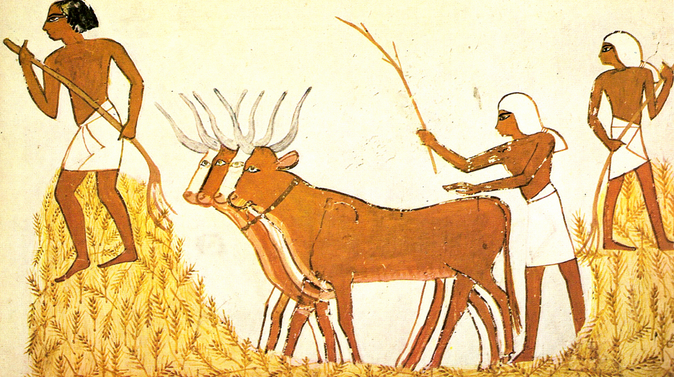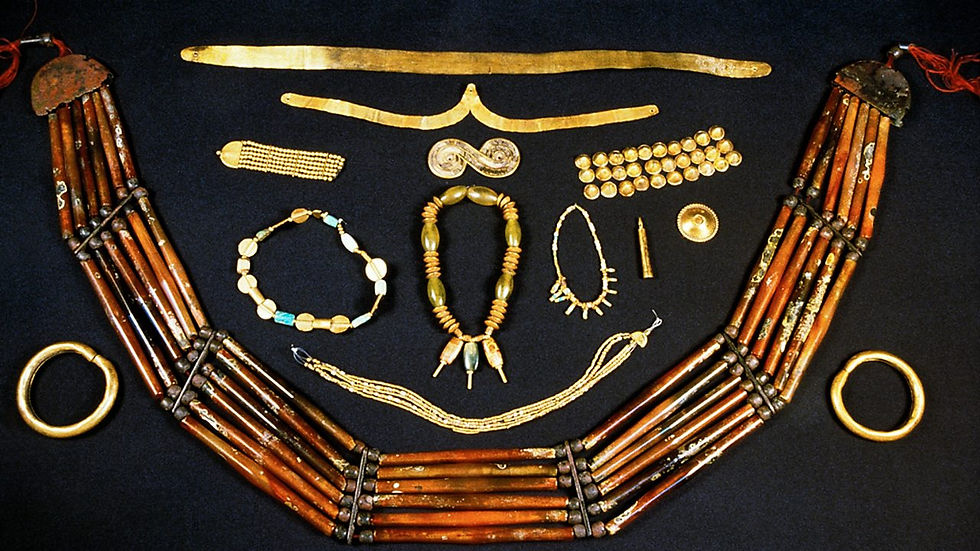A Brief History of the Indus Valley Civilization
- Dishanth Kembhavi
- Aug 16, 2023
- 5 min read
The Indus Valley Civilization or the Harappan Civilization was an ancient urban society situated vastly in modern-day India and Pakistan in the Indus River Valley. This early human civilisation thrived between the years 3300 BCE and 1900 BCE. It was first discovered in 1921 at Harappa and then in Mohenjo-daro in the following year, along the banks of the Indus River in Pakistan. The Harappan Civilization consisted of a total of 1,052 settlements that scattered from the North Indian plain to the Balochistan province in Pakistan, covering a total area of almost 1.3 million square kilometres. To this day, it remains one of the earliest findings of our ancestral societies after ancient Mesopotamia and Egypt.

Key sites of the Indus Valley civilisation
Architecture and Urban Planning
As archaeologists unearthed the “twin capitals” of Harappa and Mohenjo-Daro, they found them to be built only by bricks. Upon this discovery, they were astonished by its meticulous planning and construction layout. Situated along the Indus River, there was plenty of mud to make bricks that would further help construct homes, a citadel and even a public bath. Houses were built in grid patterns and streets were interconnected from one end of the settlement to the other. Since bathing and cleanliness were essential for the Harappans, homes were equipped with wells for fresh water and even toilets that connected to a main drainage system. This vast network of interconnected drains was the first of its kind in human history.

The capital city - Harappa
Agriculture and Animal Domestication
The sociology of the Harappan Civilization is still relatively unknown and remains a matter of conjecture among academic and archaeological circles. Even the social and daily life of the average Harappan remains a subject of mystery. However, since its discovery and subsequent detailed studies, it has been found that the Harappans were regarded as an agrarian society by many experts. Since the lands surrounding the Indus River were fertile, the Harappans were reliant on water supply for their farming, drainage and daily usage. On the lands of Harappa and Mohenjo-Daro, many granaries were discovered which may prove they stored grains like rice, wheat and barley. They also grew other crops like cotton, pulses and dates. Animal husbandry was prevalent in all settlements. During the excavation of some sites, many tablets and stones discovered showed drawings and etchings of animals like buffalos, cows, sheep and pigs which indicated that they also domesticated animals. During the excavation in Surkotado in Gujarat, the jawbone of a horse was found. Terracotta figures of a horse have been found at Nausharo and Lothal.

The fertile Indus River Valley enabled the Harappans to be agrarian.
Craft and technology
The excavation uncovered at various sites proved that the Harappans were highly skilled in pottery and metallurgy. Their expertise is evident in finely crafted vessels and utensils highlighting their mastery of ceramics. As a civilization heavily dependent on trade, the Harappans also crafted standardized weights and measures that enabled an administrative system that facilitated commerce and resource allocation. Of the most famous of finds at the multiple sites, countless Indus seals, often inscribed with symbols and animals were uncovered. The purpose of these seals is yet to be deciphered and could hint at the society’s potential for record-keeping or a written form of communication.

Carefully crafted jewellery by the Harappans
Of many other objects that were excavated, the Harappans had also demonstrated craftsmanship for elaborate beadwork and jewellery. Terracotta figurines were the most popular art forms depicting animals, humans and possibly deities were also uncovered by archaeologists giving further insight into the Harappans’ cultural practices, beliefs and artistic expressions. Female terracotta statuettes were majorly found laden with jewellery and other artefacts, whereas male terracotta statuettes were donned with beards and horns. There are varieties of terra-cotta animals, carts, and even toys shaped like animals and bullock carts.
Economy and trade
The archaeological remains of standardized weights and measures, the granaries, and the seals, strongly indicated the Harappans’ involvement in trade and export. Experts suggest that the Harappans were trading goods like grains, cloth, pottery and utensils not only internally between settlements but also with the far-off civilizations of Mesopotamia and Central Asia. With their organized planning and infrastructure, the vast urban capitals of Harappa and Mohenjo-Daro acted as hubs for economic and trade activities. In the mid-1950s, a small settlement named Lothal in the Bhall in Gujarat was found to have the world’s earliest known docking facilities, making it well connected to other settlements and civilizations by water transport systems for trade and exports. between different regions and civilizations. This dynamic economic landscape facilitated cultural exchange, allowing for the sharing of ideas, beliefs, and practices and further helped the civilization thrive.
The Harappans were known to have traded with ancient Mesopotamia via land and sea routes.
Language and Scripts
The script used by the Harappans remains one of the most famous undeciphered scripts in history and has baffled many scholars and linguists since its discovery. Using a wide collection of symbols, the script has been found on several seals, artefacts, and pottery which has suggested that it was a form of writing that was crucial for communication in the economy and trade of the civilization. Due to its complex nature, yet elementary appearance, there is limited textual evidence to even help translate or interpret any of the symbols in the script. Several linguists have theorized that the Harappans were widely bilingual and their primary scripts were derived from early Mesopotamian cuneiform and Proto-Elamite scripts. The challenge that faces scholars is that there is no current bilingual “Rosetta Stone” to decipher the script making progress incredibly slow and complex. Its study is a constant subject of speculation and theories proposed over the years since its discovery.

Decline and Theories of Collapse
The decline and collapse of the Indus Valley Civilization is a subject of ongoing debate and speculation among its scholars with several theories explaining the civilization’s eventual decline. Some have theorized that the Harappans were forced to migrate due to challenging environmental factors, such as changes in river patterns, and draughts which may have disrupted agricultural and economic systems. A sudden weather change or decades of rapid climate change in the Bronze Age may have brought mass migration of the Harappans.
Other scientists and scholars believe that the event of the Indo-Aryan Migration, a historical event that was theorized in the early 1900s that a group of people called the Aryans invaded the Hindu Kush mountains and furthered their efforts into India and Pakistan, was responsible for the gradual disappearance of the Harappans. Thus, taking over lands, language and trade of the entire region. The possibility of natural disasters like earthquakes, and flash floods may have caused significant damage to their agricultural and economic systems thus forcing a mass exodus from the land. Any chance of internal strife, political unrest and changes in leadership have been disputed due to the lack of evidence of any sort of political and hierarchical systems.
As fascinating as the study of the rise of the Indus Valley Civilization is, the more mysterious is its decline and collapse. Most of it has been left to popular imagination and possible theories that may not be proved until concrete evidence has been uncovered.
